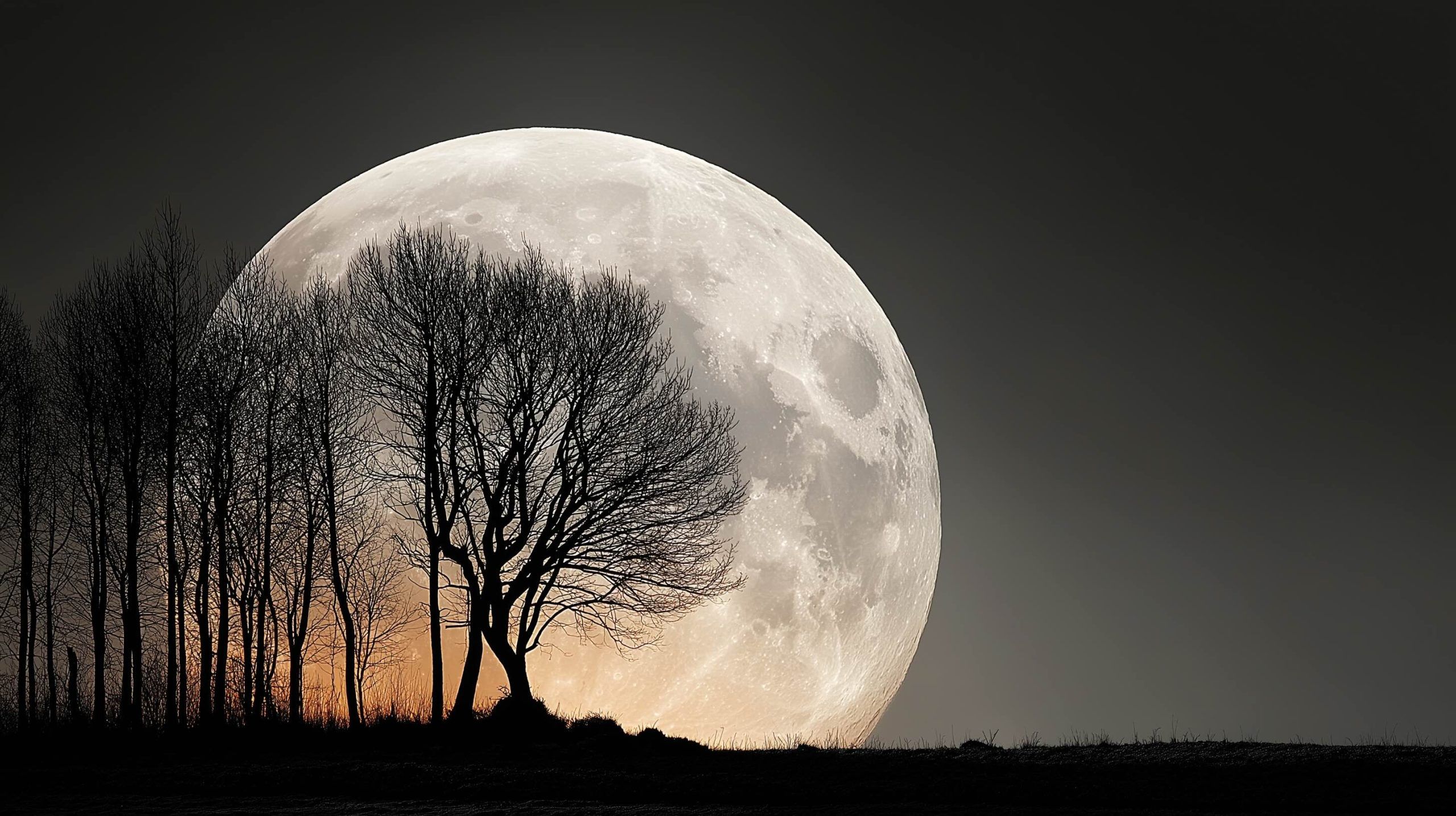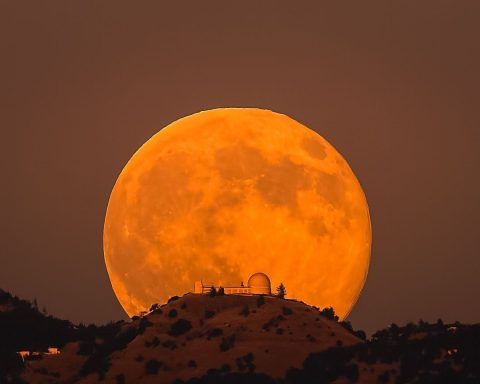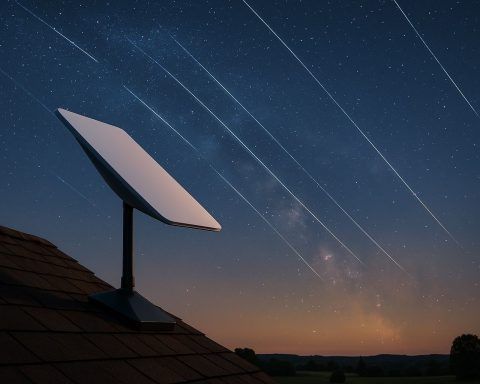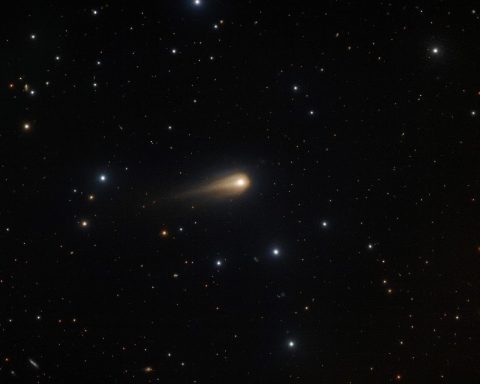- Peak Full Moon Timing: The Harvest Supermoon will reach peak illumination on Monday, October 6, 2025 at around 11:48 p.m. Eastern Time (03:48 GMT on Oct. 7) [1]. It will appear full and radiant on the nights immediately before and after as well [2].
- Harvest Moon & Supermoon Combo: This full moon is both the annual Harvest Moon (the full moon nearest the autumn equinox) and a supermoon (a full moon near its closest point to Earth) [3]. Such a pairing is relatively special – 2025’s Harvest Moon falls in October (rather than the usual September) due to lunar cycle timing [4].
- Bigger & Brighter Moon: Because the moon is near perigee (closest approach to Earth), it will appear about 10–14% larger in diameter and up to 30% brighter than the faintest full moon of the year [5] [6]. This subtle boost makes the moon look especially brilliant, though casual observers may only notice the difference during moonrise or through direct comparison.
- First of a Supermoon Trio: This October 6 supermoon is the first of three consecutive supermoons closing out 2025 [7] [8]. The following full moons in November and December 2025 will also be supermoons, with the Nov. 5 “Beaver Moon” slated to be the closest and largest full moon of the year [9] [10].
- Astronomical Highlights: The Harvest Supermoon will rise around local sunset on Oct. 6, creating a dramatic sight low on the horizon [11]. Thanks to an optical “moon illusion,” it may look gigantic when it’s just above the skyline [12]. Expect a golden-orange hue in the first hour after moonrise as Earth’s atmosphere scatters cooler colors and lets warm tones shine through [13]. Saturn will appear as a bright point just to the upper right of the moon that night, adding to the celestial show [14] [15].
- Cultural Significance Worldwide: The Harvest Moon traditionally signaled the end of the harvest season in many Northern Hemisphere cultures. Farmers could work late by its light, and it features in folklore and song. In 2025, October 6 also coincides with major lunar festivals: it’s the date of the Mid-Autumn Moon Festival (a.k.a. Mooncake Festival) in China and across Asia, when families reunite to admire the bright moon [16]. Similarly, Korea’s Chuseok and Japan’s Tsukimi celebrations will honor this full moon with traditional foods, lanterns, and moon-viewing gatherings.
- Tides & Wildlife: Around the supermoon, coastal communities may see higher-than-normal tides – sometimes called “king tides” – on the days around October 6-7 [17] [18]. The effect is modest (a few extra inches of tide) but can contribute to minor flooding in low-lying areas. Wildlife can also respond to a bright full moon: for example, studies note that lions hunt less on moonlit nights and make up for it after full moon, and certain corals and insects time their breeding activities with the full moon’s light [19]. Folklore through the ages has linked full moons to everything from restless pets to werewolf legends, but experts stress the moon’s effects on human behavior are minimal (aside from inspiring awe!).
A Rare “Harvest Supermoon” Lights Up October Skies
Mark your calendars for a lunar spectacle: on the night of October 6, 2025, a conspicuously big, bright full moon will dominate the sky. This isn’t just any full moon – it’s a “Harvest Moon” Supermoon, an unusual coincidence that promises a dazzling show. Skywatchers across the globe will be able to enjoy this brilliant moon without any special equipment, as long as clouds don’t get in the way. And unlike an eclipse or meteor shower, everyone in the world can see this supermoon if it’s nighttime in their time zone, since the moon’s glow reaches every corner of the Earth’s night side [20] [21].
When to look: The moon will officially reach its full phase at 11:48 p.m. Eastern Daylight Time on Oct. 6 (which is 8:48 p.m. Pacific Time, or 03:48 GMT on Oct. 7) [22]. But you don’t have to pinpoint that exact minute – the moon will appear fully illuminated on both Oct. 6 and the nights surrounding it. In fact, on the evening of Oct. 6, you can watch the nearly full moon rise in the east around sunset, which is one of the best times to appreciate it. As it comes up over the horizon at dusk, the moon will loom impressively large and orange, an effect of both its actual closeness and some tricks of our perception. Many observers find that a low-hanging moon looks enormous, thanks to the “moon illusion,” which tricks our brains when the moon is viewed near the landscape for reference [23] [24]. The orange or amber tint is real physics: you’re seeing the moon’s light filtered through a thick slice of Earth’s atmosphere near the horizon, which scatters blue wavelengths and lets the warmer hues pass through, giving the rising moon a golden-pumpkin glow [25].
As the evening deepens, the moon will climb higher and turn its typical pale silver. By local midnight, it will be high overhead (for most mid-latitude observers) and brilliantly white. Even then, it’s worth gazing up – the moon will be about 224,600 miles (361,000 km) from Earth, significantly closer than its average distance of ~238,900 miles [26] [27]. That close approach is why this full moon qualifies as a “supermoon.” In practical terms, the moon’s disk will be a bit larger and brighter than usual. How much brighter? NASA notes roughly 30% more luminous and 14% bigger in apparent diameter compared to the smallest full moons (when the moon is at its farthest) [28] [29]. It’s a noticeable bump, though casual observers might not realize it unless comparing photos or remembering exactly how the moon looked at another time. “If you go out and just look at the moon when it’s very high in the sky, there is nothing relative to it to give you an idea of how big it looks,” explains Derrick Pitts, chief astronomer of Philadelphia’s Franklin Institute [30]. In other words, without a frame of reference, the supermoon’s size difference is subtle – but catch it near the horizon or beside familiar landmarks, and it will surely feel super!
Why “Harvest Moon”? The term Harvest Moon is a nod to both timing and tradition. It’s defined as the full moon closest to the autumnal equinox (which occurred on September 22, 2025) [31]. In most years, that honor falls to a September full moon, but 2025 is special – the September full moon came too early (September 7) and was actually farther from the equinox than the October 6 full moon [32]. So this year, October claims the title of Harvest Moon, something that happens only occasionally. (Between 1970 and 2050, the Harvest Moon falls in October 18 times; the last time was 2020 and the next will be 2028 [33].) The Harvest Moon is steeped in agricultural folklore: before electric lights, farmers eagerly awaited this bright moon to extend their workdays during the critical harvest period, using its light to gather crops late into the evening [34] [35]. In fact, one special aspect of the Harvest Moon is that around the equinox, the geometry of the moon’s orbit causes moonrise to occur at nearly the same time for several nights in a row, instead of the usual ~50-minute delay each night [36] [37]. That means for a few evenings, the full (or almost-full) moon rises shortly after sunset night after night, creating a string of bright, moonlit evenings with very little darkness in between. This effect – often noted in farming lore – was considered a gift of nature allowing farmers to “continue working into the night without interruption” during the harvest [38]. It’s easy to see how the Harvest Moon earned its name and legendary status in rural communities. Even today, the term survives in popular culture (you may recall the old song “Shine On, Harvest Moon”) and in annual traditions like fall fairs and harvest festivals.
Supermoon Science: What Makes It Super?
The “supermoon” moniker is a more recent term (originating in the late 1970s from an astrologer, and later popularized in the 21st century), but it’s now widely used to describe a full moon that occurs near perigee, the moon’s closest point in its slightly elliptical orbit around Earth. Astronomers often call this a perigean full moon. According to NASA, a full moon qualifies as a supermoon when it becomes full within about 90% of its closest possible distance to Earth [39]. In simpler terms, the moon happens to be a bit closer to us than average during a supermoon, making it appear a bit bigger and brighter. October’s Harvest Moon checks those boxes – it comes about 1½ days after the moon’s perigee in early October, so it’s well within that range [40].
It’s important to note that supermoons are not exceedingly rare – there are usually a few of them every year. “It’s not really very unusual,” astronomer Derrick Pitts says of supermoons, noting that the moon’s slight size change often goes unnoticed [41]. In 2025, however, the timing is fun: this Harvest Supermoon on Oct. 6 is the first of three back-to-back supermoons to finish the year [42]. The next full moon on Nov. 5, 2025 will be a supermoon as well – in fact, that “Beaver Moon” of November will be the largest of 2025, coming even closer to Earth [43]. December’s full moon will follow with another (slightly more distant) supermoon. So, think of the Harvest Moon as kicking off a fall trilogy of supermoons. If cloudy weather spoils your view in October, you’ll get another chance under November’s even-more-impressive lunar display. And if you catch all three, you might notice the November one appears marginally larger than October’s – a discerning eye or a side-by-side photo comparison can reveal the difference.
For those wondering how much a supermoon really stands out: At perigee, the moon can be about 30,000 miles closer to Earth than at apogee (its farthest point). That difference in distance ( roughly 362,000 km vs. 405,000 km) translates to about a 14% increase in apparent diameter and roughly 30% more brightness at full moon [44]. The Oct 6 Harvest Supermoon will indeed be around that level – about 224,600 miles away at closest approach [45], roughly 10% closer than the moon’s average distance. The extra brightness will be especially welcome coming on the heels of the equinox: nights are growing longer in the Northern Hemisphere, and this luminous moon will light up the early October nightscape beautifully. Just don’t expect it to look like a gigantic pumpkin balloon – the moon won’t suddenly swell in size; the increase is noticeable but not jaw-dropping. Most people will simply think “Wow, what a bright full moon tonight!” without realizing it’s somewhat super-sized.
How to See and Enjoy the Harvest Supermoon
One great thing about a full moon is that no telescopes or binoculars are required – you can enjoy its beauty with the naked eye. To make the most of this Harvest Supermoon, here are some viewing tips and highlights:
- Catch the Moonrise: Plan to watch the moon rising in the east around your local sunset time on October 6. In many places, that will be sometime between 6:00 and 7:30 p.m. local time (adjust for your timezone). As the moon lifts above the horizon, it will likely appear enormous and deep orange. This is partly an optical illusion (our brains gauge it against foreground objects) [46], and partly due to atmospheric filtering as mentioned. Those first 15–30 minutes after moonrise are when the Harvest Moon will look its most “harvest-y” – big, amber, and hanging low over fields, city skylines, or trees. It’s a fantastic time for photographs (try including some landscape for scale). By Tuesday Oct. 7 dusk, the moon will still be about 98% full and will rise only a bit later, so you can enjoy an “encore” bright moonrise then too.
- Find a Clear View: Because we want to see the moon at the horizon, try to find an observing spot with an unobstructed view of the eastern sky. An elevated location, shoreline, or open field is ideal so that buildings or trees don’t block the low moon. If you’re in a city, perhaps head to a park or somewhere you can see the eastern horizon. Many astronomy enthusiasts recommend higher ground or even the top of a building to get that perfect sightline.
- Notice Saturn Nearby: As darkness falls, keep an eye out for Saturn, which will be shining just to the right of the moon. Saturn was at opposition (its closest to Earth and brightest) in late September, so it remains bright and not far from the moon’s vicinity this night. In fact, on Oct. 6 the ringed planet will hover about 15° to the moon’s upper right (around “one and a half fist-widths” at arm’s length) [47] [48]. Saturn’s golden-white glow complements the moon. If you have binoculars or a small telescope, you might even glimpse Saturn’s rings as tiny protrusions. The four stars of the Great Square of Pegasus will also form a large diamond shape above the moon and Saturn [49] – a neat autumn constellation marker for those who enjoy identifying star patterns.
- Enjoy the Brightness: The Harvest Supermoon will flood the night with light. Take a moment to appreciate how shadows become sharp under the full moon’s glow. On October 6-7, there will be little to no period of full darkness in early evening because the moon rises so soon after sunset [50]. You might even try a moonlight hike or simply sit outside and observe how the landscape is illuminated. Urban areas will find the moon competing with streetlights, but in the countryside the effect is magical – almost like a dim daytime. If you’re into photography, the bright moon and moonlit scenery are great subjects (just note the moon’s brightness can wash out stars in photos).
- Meteor Shower Distraction: Coincidentally, the annual Draconid meteor shower falls in early October, peaking around October 8. Normally, the Draconids are a minor shower (perhaps up to 10 slow meteors per hour radiating from the constellation Draco) – but with the supermoon’s glare, spotting those “shooting stars” will be challenging [51] [52]. The moonlight will outshine all but the brightest meteors. If you’re lucky, you might catch a few Draconids streaking in the sky after dusk on Oct. 7 or 8, but don’t be surprised if the moon steals the show. Meteor enthusiasts may have to wait for the Orionid meteor shower later in October (when the moon is out of the way) for better viewing. In short, during the Harvest Moon nights the moon is the spectacle – and it may literally outshine other celestial events.
- Use Binoculars for Detail: While you absolutely can enjoy the supermoon with unaided eyes, a pair of binoculars can enhance the experience. Even simple 7×50 binoculars will reveal lunar craters and the dark lava plains (maria) on the moon’s surface. Scan along the moon’s terminator (the shadow line) for the best contrast on crater rims and mountains. During full moon the terminator is actually at the very edges (since the face is fully lit), so features can appear a bit flat due to lack of shadows. Still, you’ll easily pick out large features like the Sea of Tranquility or Tycho’s bright crater rays. Some astronomy groups and observatories host public “moon watch” events where telescopes are available – check your local science center or astronomy club to see if any Harvest Moon viewings or fall star parties are scheduled. (For example, Oct 4, 2025 was “International Observe the Moon Night,” a global event encouraging people to gather and celebrate lunar observation [53]. Even though that date just passed, many community events tied to it might be happening over the weekend, doubling as Harvest Moon viewings.)
Global Culture and Legends of the Harvest Moon
The Harvest Moon has a special place not only in astronomy, but also in culture and history. In Europe and North America, the name “Harvest Moon” dates back to at least the 18th century and was popularized in agricultural almanacs. It was one of many full moon names—such as Corn Moon, Hunter’s Moon, etc.—used in both folk tradition and by some Native American tribes to track the seasons [54]. The Harvest Moon, coming at the transition from summer to autumn, signaled that it was time to bring in the last of the crops: “Corn, pumpkins, squash, beans, and wild rice – the chief staples – are now ready for gathering,” as one historical account notes [55]. Even after industrialization, the romance of the Harvest Moon persisted, inspiring art and music. The idea of a bright full moon helping the farmers was charming enough to feature in old songs and poems, and it endures in modern fall lore (think of harvest fairs, jack-o’-lanterns glowing by moonlight, and the general autumnal fascination with the moon).
Importantly, this particular full moon of 2025 is making waves globally because it aligns with significant cultural holidays in the Eastern Hemisphere. In many parts of Asia, the Harvest Moon corresponds to the Mid-Autumn Festival, an ancient celebration of the full moon, good harvest, and family unity. In China, this is a major holiday (also known as the Moon Festival or Mooncake Festival), which in 2025 falls on October 6 – the very night of the full moon [56]. Families gather for reunion dinners, exchange and eat mooncakes (round pastries symbolizing the full moon), and go outside to appreciate the moon together. Cities like Hong Kong host spectacular lantern carnivals, and in some places (like Hong Kong’s Tai Hang district) a fiery dragon dance winds through the streets in honor of the moon [57] [58]. Similarly, in Vietnam the Mid-Autumn Festival is a time for children’s lantern parades under the bright moon, and in Taiwan it’s common to have outdoor barbecues while admiring the lunar glow.
Korea’s Chuseok (often called Korean Thanksgiving) is another harvest moon festival – and in 2025 Chuseok spans October 5–7, with the main day on the 6th. It’s a time when Koreans return to hometowns, pay respect to ancestors, and yes, gaze at the full moon after feasting. Japan’s Tsukimi (moon-viewing ceremony) also reaches its peak on the Harvest Moon night. People decorate with seasonal pampas grass and eat rice dumplings (dango) as offerings, all while contemplating the beauty of the “Chūshū no Meigetsu” (Mid-Autumn bright moon, which will shine on October 6, 2025 in Japan). These parallel traditions show how universal the allure of the full harvest moon is – across cultures separated by vast distances, humans have independently chosen this same moon to celebrate abundance, gratitude, and togetherness. It’s a lovely thought that on this night, billions of people around the world, from farmers in rural America to families in Beijing to skywatchers in Europe, will all be looking up at the same luminous moon.
Folklore and mythologies surrounding the moon are virtually endless. The Harvest Moon, in particular, was often personified as a generous helper. In some European folklore, it was seen as a sign of a bountiful harvest and good fortune. Many languages have picturesque names for this moon – for instance, one old Anglo-Saxon name for the September/October full moon was the “Wine Moon,” indicating it was time to harvest grapes. In Chinese legends tied to the Mid-Autumn Moon, they tell the story of Chang’e, the moon goddess, and families relaying this tale will look for the shape of a moon rabbit said to be pounding the elixir of life in the lunar shadows.
On the flip side, any full moon (especially a big bright one) also has spooky or eccentric lore attached. Since this moon occurs in October, it naturally gets linked to the Halloween season – notice how the People.com article teasing this moon said it casts “an eerie glow that makes the night feel straight out of a Halloween legend” [59] [60]. Full moons have long been associated with werewolves, madness (the term “lunatic” comes from luna, Latin for moon), and heightened emotions. While these are largely myths, it’s true that the moon’s brilliance can disrupt the night’s darkness; for example, some studies have found that animals and even humans might sleep slightly less on full moon nights due to the extra light. And as noted, wildlife biologists have documented real lunar influences: lion pride behavior changes after bright moons, coral reef spawning events synchronize with full moons, and creatures like scorpions glow under moonlight (making them more visible, so they often hide during full moons) [61] [62]. There is even research suggesting birds sing more at night during full moons, and some fish and sea turtles navigate by the moon. So, in a way, the moon does have a “wild” side – just not in the over-dramatic ways fiction might suggest. For the average person, the main effect of a supermoon might simply be feeling inspired or enchanted by the extraordinary sight. It’s the kind of night where you might see more people than usual out for a walk, looking up, or attempting to take photos of the huge moon on their smartphone. Social media will no doubt light up with snapshots of the Harvest Supermoon from around the world, as each time zone gets its turn with the big orb in the sky.
Wrapping Up: Don’t Miss the Show!
The October 2025 Harvest Moon Supermoon is poised to be one of the year’s most memorable celestial events. It combines science (a close approach of our moon) with seasonal tradition (the final harvest of summer) and sprinkles in a dash of cultural celebration from around the globe. If the weather cooperates, make sure to step outside on Oct. 6 and bask in the moonglow. Whether you’re an avid astronomer or just someone who enjoys a pretty night sky, this event offers something for everyone: a chance to reflect on age-old traditions, marvel at the workings of the solar system, or simply enjoy a beautiful night out under a brilliant full moon. And if you find yourself especially captivated, remember there’s more to come – another even closer supermoon will arrive on Nov. 5, 2025, so you can compare and see just how “super” a supermoon can get [63]. Until then, enjoy the enchanting sight of October’s rare Harvest Supermoon and the gentle light it casts upon our world. Happy moon-gazing!
Sources:
- NASA – What’s Up: October 2025 (Skywatching tips) [64] [65]
- Live Science – J. Carter, “Harvest Moon 2025: Rare October Supermoon” [66] [67]
- Space.com – A. Wood, “Don’t miss the full ‘Harvest Supermoon’ rise on Oct. 6” [68] [69]
- Space.com – J. Rao, “Why 2025’s Harvest Moon is a rare October full moon” [70] [71]
- Associated Press (A. Ramakrishnan) – “First supermoon of the year is approaching” [72] [73]
- People Magazine – V. Mesa, “How to Watch October’s Rare Supermoon” [74] [75]
- EarthSky – D. Byrd, “The Super Harvest Moon overnight on October 6-7” [76] [77]
- Hong Kong Tourism Board – Mid-Autumn Festival 2025 notice [78]
- Live Science – L. Poppick, “6 Wild Ways the Moon Affects Animals” [79]
References
1. www.space.com, 2. www.livescience.com, 3. www.space.com, 4. www.space.com, 5. www.kptv.com, 6. science.nasa.gov, 7. www.livescience.com, 8. www.kptv.com, 9. people.com, 10. www.kptv.com, 11. www.space.com, 12. www.space.com, 13. www.space.com, 14. www.space.com, 15. www.space.com, 16. www.discoverhongkong.com, 17. earthsky.org, 18. earthsky.org, 19. www.livescience.com, 20. www.kptv.com, 21. www.kptv.com, 22. www.space.com, 23. www.space.com, 24. www.space.com, 25. www.space.com, 26. www.livescience.com, 27. www.kptv.com, 28. www.kptv.com, 29. science.nasa.gov, 30. www.kptv.com, 31. www.livescience.com, 32. www.space.com, 33. www.space.com, 34. www.space.com, 35. www.space.com, 36. www.space.com, 37. www.space.com, 38. www.space.com, 39. people.com, 40. www.livescience.com, 41. www.kptv.com, 42. www.livescience.com, 43. people.com, 44. www.kptv.com, 45. www.kptv.com, 46. www.space.com, 47. www.space.com, 48. www.space.com, 49. www.space.com, 50. www.space.com, 51. www.livescience.com, 52. www.livescience.com, 53. science.nasa.gov, 54. www.space.com, 55. www.space.com, 56. www.discoverhongkong.com, 57. www.discoverhongkong.com, 58. www.discoverhongkong.com, 59. people.com, 60. people.com, 61. www.livescience.com, 62. www.livescience.com, 63. people.com, 64. science.nasa.gov, 65. science.nasa.gov, 66. www.livescience.com, 67. www.livescience.com, 68. www.space.com, 69. www.space.com, 70. www.space.com, 71. www.space.com, 72. www.kptv.com, 73. www.kptv.com, 74. people.com, 75. people.com, 76. earthsky.org, 77. earthsky.org, 78. www.discoverhongkong.com, 79. www.livescience.com










